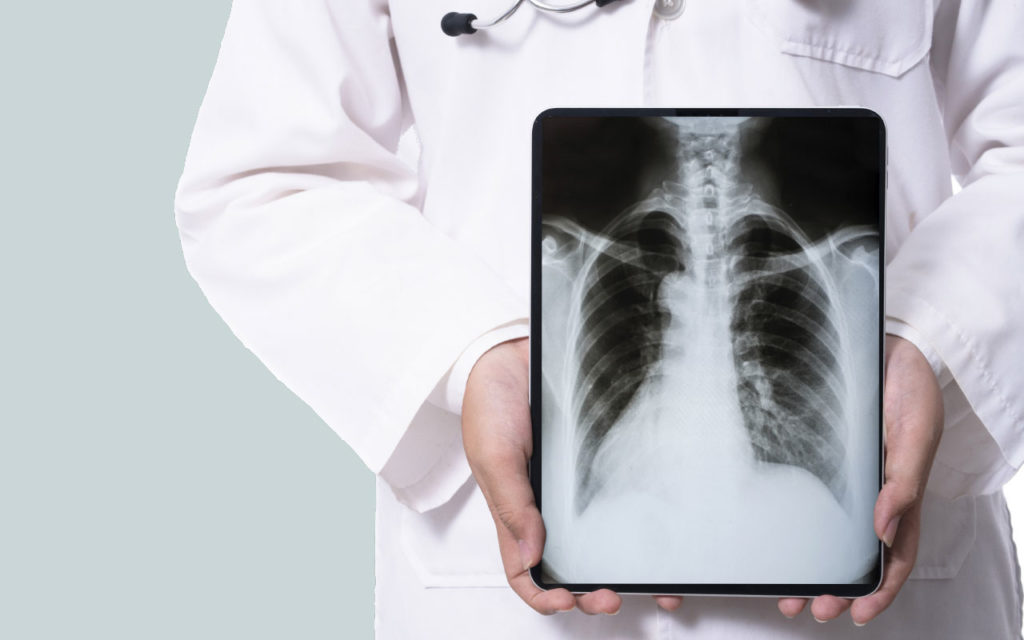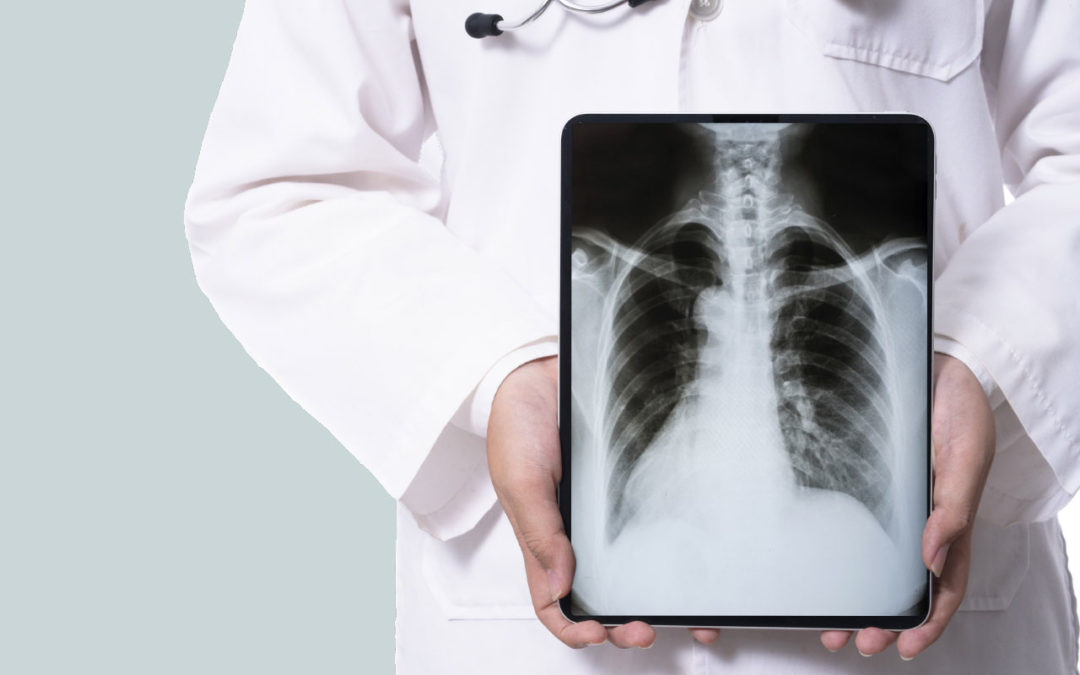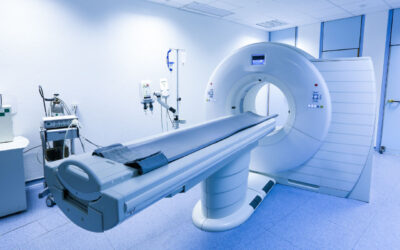
By Matt Skoufalos
Prior to the proliferation of picture archiving and communication system (PACS) technologies, which enabled the digital archiving and distribution of medical images, physicians were reliant upon physical media to store and share patient imaging studies. Even after the imaging industry converted to digital image acquisition, sharing those digital images still required transferring physical media like CDs, DVDs and portable hard drives. With the rollout of broadband Internet came virtual private network (VPN) peer-to-peer connections that could support the electronic transfer of large digital image files. Now, in the era of high-speed, wireless Internet, cloud computing, and data storage, the networks that support on-demand sharing and viewing of large, high-resolution medical images span the globe.
Tim Carrigan, regional sales manager for the Midwest and North Atlantic United States for MXR Imaging of Detroit, Michigan described current market conditions for the portability of medical images as “a pretty exciting time” in the history of the various technologies that underpin the process.
If, as Carrigan said, the old ways based in physical media were “cumbersome and very limiting,” then the newest batch of technologies “has opened doors to millions of different uses and workflow enhancements regarding the sharing of patient data.”
“It’s an amazing time to be able to talk about the ways of eliminating what was printed on film, printed on paper and burned to CD,” he said. “The difficulty now is getting patients and health care providers to see and use those advancements.”
When cloud-based computing was first available, hospitals and health systems were apprehensive about opening their facilities to the Internet, Carrigan said. Nowadays, amid increased demand for the ease of use and efficiency that such systems facilitate, they can be found throughout the imaging department, from radiology information systems (RIS) to electronic medical records (EMR). By their very nature, distributed computing systems thrive on ubiquity.
“There’s a reduction in the level of maintenance that’s associated with managing and archiving images for facilities because the images aren’t living on servers in their IT departments,” Carrigan said. “There’s advantages to not investing in obsolescence. The ability to share reports and access the imaging-related data is fantastic.”
“That’s helped drive the customer’s comfort level relative to getting that stuff offsite, stored in the cloud securely, and knowing that, in the event of a disaster, it’s better that it’s not in their building,” he said. “Being able to access that data in multiple locations is becoming more attractive as the physician base gets more comfortable with using that technology.”
His colleague, Stuart Birkinbine, regional sales manager for the Western United States at MRX Imaging, notes that amid the push for greater system interoperability, different challenges emerge; most notably, ensuring the security of the various forms of sensitive data that are shared among various health networks and across various hospital systems.
“From a healthcare information technology (HIT) perspective, you will run into a lot of groups that are very concerned over the transmission of that data,” Birkinbine said. “It’s not uncommon for us to be talking about a PACS and RIS system and have to answer hundreds of questions about data security, and how that information is able to be accessed without being stolen or hacked into. All of those things are hindrances to making that data more mobile.”
As Carrigan notes, “HIPAA requirements are no joke,” and neither are the consequences for violating them. At that point, concerns about data integrity are as much tied in with concerns about liability, and upon whose shoulders the penalties for failing to secure patients’ and hospitals’ data should fall. It’s a question that becomes more complicated as broader digital networks are established to expand the portability of patients’ personal data among various health care practitioners, insurers, and payers, not to mention the patients themselves.
“It really is, more or less, a system of liability, and who, ultimately, is accepting that liability,” Birkinbine said. “If you as a patient have access to that information, you accept that liability. Education on that comes from a lot of different sources, but ultimately, the education is all the way down the line to understand the reason you need to make that data safe and secure.”
Carrigan points out that the same patient-level security risks have existed since the age of physical media, be it digital or analog: patients could misplace their physical exams as easily as they could find them compromised virtually across a storage network. To health care practitioners, the higher-order question is how much more can be achieved for the quality of patient health outcomes in a cloud-based system.
“The fact that stuff is more mobile and portable and secure, and that it can get to patients’ hands right in a portal, is important,” Carrigan said. “These health systems are also working in concert with other health systems regionally to develop secure methods of sharing their imaging data. That’s why VNA (vendor-neutral archives) and AI (artificial intelligence) have become the hot topics in imaging; all of that has been facilitated to a huge degree just by the different architecture that’s come to the PACS environment.”
“It’s on a lightning-strike type of trajectory in terms of the pace at which things continue to evolve,” he said. “These systems are amazing in terms of how quickly they’re able to deliver a huge study over the Internet to somebody who wants to review them at another hospital or at their home, and has permission to do so. You could be in the south of France and the department is in Manhattan. We’re there now. Imagine how much better that could get.”
To Mark Watts, enterprise imaging director at Fountain Hills Medical Center in Fountain Hills, Arizona, things can get a lot better for patients and the clinicians who treat them if more facilities would cooperate to establish image-enabled healthcare information exchanges (HIEs).
The reason many haven’t done so, he said, is fear of losing business from a competitor, and in an environment where it’s clear that patient care can be improved by more closely connecting patients at general-purpose, point-of-care facilities with specialists equipped to treat their specific conditions.
By way of illustration, he offers the following hypothetical:
“You’re in the hospital; there’s a trauma that occurred,” Watts said. “It turns out that there isn’t a neurologist who can decompress a cervical spine fracture. The patient is seen in the emergency room, they have a CT, and it turns out that yes, they have a fracture, and in that hospital, they don’t have the capability of helping that patient.”
“How do I take that image and get it to the right physician so they can utilize that data set and plan surgery in another location?” Watts said. “What if that location is out of network? They have to create some means of transferring it from one place to another.”
The ability to digitally, rapidly and securely transfer images from one location to another while that patient is in transit via helicopter or ambulance, gives the surgery team at that second location a chance to view those images, decide what’s necessary for the treatment of that patient, and then determine a course of action.
“You don’t want them to have to send the patient over, get the CD, put it in their PACS system, take time to upload it, and have the surgeon see it for the first time in the operating room, instead of having an hour or so to plan it,” Watts said. “Time is of the essence; seconds matter for brain and heart tissue.”
The ability to share that patient data with specialists across different health care institutions also cuts back on the number of unnecessary imaging studies performed. In a 2016 study published in the Journal of Digital Imaging, lead author Amy Vreeland of the Waban, Massachusetts-based Imaging Strategies points out that diagnostic imaging accounts for 10 percent of total annual health care costs ($100 billion in 2016 numbers), of which an estimated 9 percent may be unnecessary or redundant. The authors of that study also note that an HIE based in New York cut down on the adjusted odds of repeat imaging by 25 percent; it stands to reason that greater participation in such arrangements can certainly drive even greater efficiencies in this area.
However, in some parts of the country, health systems have begrudgingly participated in inter-agency image-sharing networks under only the most exigent circumstances. According to Watts, it took a fear of being crushed by novel coronavirus (COVID-19) patients to connect hospitals in Arizona in the past year of the pandemic.
“From the advent of COVID, the idea of a hospital being overwhelmed by patients has really forced there to be a bond between hospitals,” Watts said. “When the native American population was hit by COVID, the hospitals on the reservations were hit very hard. They had to set up a way to take an X-ray at the reservation hospital and send it to Flagstaff, where Northern Arizona Healthcare had another hospital set up to take care of it.”
To facilitate these connections, participating hospitals established VPNs that connected fully one-third of the state of Arizona to enable medical imaging studies to be sent to one another. With just a single level one trauma center in the northern third of the state, these connections were especially important as health care resources were stretched razor thin during the early stages of the pandemic. As Watts notes, “Traditionally, this would not have occurred because people want to take the X-ray and get paid for the X-ray, and they don’t care if they take it again somewhere else.”
“It’s an interesting thing that COVID forced their hands as far as making this happen,” he said. “They had collaboration because they had this sense of urgency of their hospital being overwhelmed.”
Every patient in need of specialty care that’s unavailable – or not commonly delivered – at their current location would want their medical imaging studies to be forwarded to a specialist in another location. The only reason hospitals wouldn’t automatically do so, Watts reasoned, is a fear of losing that patient for return business.
“To do it honestly would be to treat the patient to the highest level and capabilities of the facility, transfer them to a subspecialty as needed, and then care for them when they return home,” he said. “Meet all your patients’ needs within their community, and build that level of trust that you’re doing everything in their best interests.”
“You should do what’s best for the patient, and that ultimately will be the best for your institution,” Watts said. “Facilitate the exchange so that when the patient is well and comes back, you can do whatever you can do in your community to the highest level. But don’t impinge on the level of health care that you can provide for the patient.”
Watts knows that some of the anxiety around losing patients is a regional concern that doesn’t exist everywhere; in areas of the country where rural and community hospitals routinely refer patients for specialty procedures, fear of losing patients may be less pronounced than in denser, urban areas, where teaching hospitals vie for position among other institutions whose in-house centers of excellence represent a gauntlet thrown down amid ongoing competition. He is hopeful that the idea of more widespread HIEs will get its due, particularly among larger, national institutions, which Watts says are instrumental to driving greater adoption of these models.
“If you have a certain amount of mass, then you can move the market and make progressive ideas come through,” he said. “Intermountain Healthcare dominates the state of Utah, so if we have a Utah imaging exchange, you just connect all of Intermountain up and you have Utah covered. They have the altruistic view of wanting their patients to have the best standard of care, and so they fund this imaging exchange. But when you’re in the Northeast and you have turf battles with somebody right across the street, their trade secrets may be something that keeps them alive and viable, even though the technology is there for an imaging exchange.”
Ultimately, Watts believes that the only way in which the idea of an HIE will become more broadly adopted must come through federal intervention, as was done with mammography rules, and private-sector technological advancements. That’s in addition to the advocacy push that’s come from professional organizations like the Healthcare Information and Management Systems Society (HIMSS) and the Society for Imaging Informatics in Medicine (SIIM), the work of which laid out foundational technologies and building blocks for sharing medical images, and which continue to pioneer ways to provide better interaction among agencies.
Watts also points to vendors like Nuance, Merge, GE Healthcare and Life Image as potential leaders in a vision for image sharing that he describes as “streaming” images, but added, “it’s going to take someone who’s a disruptor, who has that clout,” to change things.
“We could get over the hurdle of having to send CDs from one location to another if we all just agree that, if we have an image at our facility, that we’ll share it with the requesting facility,” Watts said.









